By Arlo Hale Smith Jr.
Member, San Francisco Democratic County Central Committee, Former Bart Board member.
Now that the dust has somewhat settled, one thing is clear . . . Aaron Peskin’s Political Machine took a major beating in the November 2nd election.
Peskin/SFDCCC supported candidates Janet Reilly, Debra Walker and Rafael Mandelman lost in D 2, D 6. and D 8. In D 10, the “real” choice of Peskin and the Bay Guardian – Tony Kelly – not only lost, but was blocked from receiving the SFDCCC endorsement.
Ballot measures dear to the Machine also lost: Props D and E – which could have encouraged voter fraud by allowing illegals to vote and election day voter registration were defeated, as were attempts to raise the hotel tax to finance the orgies of spending desired by Peskin’s allies on the Board of Supes.
How this happened involves an analysis of the impact of RCV (Ranked Choice Voting)
District 2: Informed Voters Use RCV to Overpower Wealthy Peskin Ally Janet Reilly
The D 2 races shatters conventional political thinking (on the Left) that RCV tends to help “progressive” candidates. Ammiano and company pushed RCV on the theory that eliminating the expense of traditional two candidate “run offs” would allow less well-financed candidates a better chance to win. The problem with this logic: Peskin and his allies actually took power in 2000 because MODERATE candidates LOST conventional runoffs! [Remember, McGoldrick and Maxwell were distant second-place candidates whose run off wins were sort of a surprise!]
In the D 2 race, Ms. Reilly had ample campaign funds and managed to get every endorsement on the Left – including the Labor Council and SFDCCC – almost by default. She ran a campaign in which she actually agreed with the moderate positions of Supervisor elect Mark Farrell on most issues. She even ended up promising NOT to vote for Peskin for Mayor! However, the voters didn’t trust her protestations of “independence” from Peskin’s Machine.
This is where RCV comes in: Supporters of the 3rd, 4th and 5th place candidates voted in favor of Farrell over Reilly in the RCV choices by about a 14% margin.This was adequate to overcome Reilly’s 1.5% lead in “first choice” preferences. [Specifically Reilly lead by about 200 votes among “first choices”, but Farrell picked up 450 more votes from RCV than Reilly did, allowing him to win by about 200 votes.]
Also adverse to Reilly was the fact that most voters understood RCV and did NOT exhaust their ballots. A voter who does not indicate a second or third choice preference may have his/her ballot exhausted and not counted in subsequent RCV totals (beyond first choice tallies). Only about 1300 voters in D 2 “exhausted” their ballots. This compares favorably to the 4000 and 8000 voters whose ballots were exhausted in D 6 and D 10, respectively.
Analysis: The moderate, better educated voters of D 2 understood RCV and used it effectively.
D6: Chiu and Kim Successfully Circumvent Peskin “fix” of the SFDCCC to Win
Supervisor David Chiu actively campaigned for School Board President Jane Kim despite the fact that Debra Walker had been Peskin’s anointed candidate for over a year. This was the first truly major public break between Peskin and his hand-picked successor, Chiu.
While Kim and Walker did not dramatically differ on the issues, Kim made a point of reaching out to moderate voters, while Walker did not. This explains why Walker ended up leading on first-choice votes only in the more Left-voting precincts of D6.
On the SFDCC Chiu desperately tried to line up 18 votes to block a Walker endorsement, but fell one vote short – despite the fact that nearly every moderate SFDCCC member voted for either Kim or Police Commissioner Theresa Sparks.
Due to Peskin’s unhappiness at Kim’s decision to run, she could not even get a #2 choice from the SFDCCC. Moderate and Asian members of the SFDCCC joined Chiu in voting for Kim #2, but the vast majority of Peskin-backed members voted “no endorsement” to block Kim.
In this race, RCV worked as it did in most past elections: Kim lead Walker on election day, and the RCV results merely confirmed Kim’s lead. This was because the votes for the numerous other candidates tended to break between Kim and Walker in about the same as first choice ballots – with Kim consistently a few percentage points ahead of Walker.
In this district voters seemed less informed about RCV than in D2 or D8: About 4000 voters exhausted their ballots compared to around 1300 in D 2 and 1700 in D 8. This may be linked to lower education levels in D 6 as opposed to voters in affluent or LGBT-dominated precincts as are found in D 2 and D 8. [Note: Although there were multiple LBGT candidates running in D 6, it is not an LGBT neighborhood like much of D 8.]
Make no mistake: Though Kim is only slightly more moderate than Walker, her election required her and Supervisor Chiu to run against the SFDCCC and circumvent its endorsement. This is a grave defeat for Peskin in itself.
D8: Peskin Mudslide Results in Wiener Landslide!
Scott Wiener has been a personal target of Peskin for years. Despite the fact that the Democratic Party reached registration records under Scott Wiener’s leadership, Peskin’s first move upon taking control of the SFDCCC in 2008 was to remove Scott as Chair. This was accomplished through threats and intimidation of SFDCCC members.
However, Peskin may have done Scott a favor: By removing him as SFDCCC Chair. Peskin gave Scott two years to campaign for Supervisor – without having to deal with the many administrative issues which will plague ANY SFDCCC Chair.
The campaign was dirty: The SFDCCC only voted to endorse Rafael Mandelman by a bare majority and NEVER authorized the SFDCC to issue any “attack” pieces against any opposing candidate. This did not stop Peskin and Mandleman: Every Democratic voter in D 8 who had given the Registrar of voters an email address was mailed pieces purportedly from the “SF Democratic Party” which falsely suggested that Scott was endorsed by the Republican Party, and supports discrimination against immigrants and repeal of all rent control laws.
Payback occurred on election day: Not only did Scott Wiener win big in “first choice” votes, but the RCV transfer from moderate candidates Rebecca Prozan and Bill Hemenger was in Scott’s favor by about a 60%-40% margin. Also only about 1700 voters exhausted their ballots (compared to 4000 in D 6 and 8000 in D 10). This indicates that LGBT (Lesbian, Gay, Bi and Transexual) voters figured out RCV and intelligently cast strategic votes to stop election of Machine candidate Mandelman.
This is consistent with the pattern that emerged in the Oakland Mayor’s race. Strategic RCV voting by the LGBT community in that race was illustrated by the fact that 75% of those who voted for lesbian Councilmember Rebecca Kaplan, transferred their votes to Jean Quan – allowing Quan to overcome a 10% lead by Senator Don Perata in first choice votes.
In the D8 race, however, the strategic use of RCV INCREASED the front-runner’s (Scott’s) lead, rather than diminished it.
The defeat of Mandleman was a great blow to Peskin’s attempt to create a “veto proof” majority on the Board of Supervisors. For years, Peskin and the Bay Guardian have regarded Bevan Dufty as “the blocker” who kept them from overriding numerous Mayoral vetoes by Mayor Newsom.
Peskin now probably wishes there were no term limits . . . since he surely would have preferred 4 more years of Bevan Dufty (who occasionally did back Peskin on veto overrides) to the election of his nemesis, Scott Wiener!
D 10: The Candidate Won Understood RCV The Best Pulls It Off
This story is one in which an intelligent candidate and community concern about lack of African American representation stopped Peskin from foisting one of his Caucusian cronies onto the Board of Supes as a representative of this mostly minority District.
Peskin could not get Tony Kelly even third choice from the SFDCCC for a good reason: Though not all supporting the same candidate, African-American community members thronged the SFDCCC endorsement meeting, demanding that the SFDCCC endorse African-American candidates. The SFDCCC ended up doing exactly that: endorsing DeWitt Lacy #1, Malia Cohen #2, and Eric Smith #3. Due to this very public pressure, many of Peskin’s stalwarts were unwilling to vote for Kelly over an African-American candidate. Indeed, here Peskin’s strategy of recruiting officeholders running for the SFDCCC backfired. After all, did Peskin really expect that Supervisors and School Board members want to be responsible for NO AFRICAN AMERICAN on the Board of Supes? Of course not!
Credit must be given to Malia Cohen for understanding that, in a closely divided race, a lot of #2 votes can beat lots of #1 endorsements for other candidates. Cohen managed to get #2 endorsements from the SFDCCC and Labor Council – which had made #1 endorsements for also-rans DeWitt Lacy and Chris Jackson, respectively. These endorsements helped move Lacy’s and Jackson’s #2 votes to Cohen. Perhaps most crucially, Ms. Cohen understood the key was getting #2 votes from MODERATE African-Americans. Most of these voters were first choice supporters of BART Director Lynette Sweet. Cohen handled this by approaching supporters of Sweet and asking for #2 votes. It worked! The crucial RCV vote transfer of 500+ from Sweet’s supporters vaulted Ms. Cohen over Kelly.
To her credit, Malia Cohen did reach out to moderates during her campaign. She was, for example, at Plan C events that no other D10 candidate except Sweet was present. Hopefully, Ms. Cohen will be more independent of the Machine than her predecessor Sophie Maxwell was.
While RCV may have “worked” to elect an African-American candidate in this case, D10 shows a weakness with RCV. Many voters in D10 did not understand how to strategically vote using RCV, and exhausted their ballots. In D10 the number of exhausted ballots was over 8000. In contrast, the numbers of exhausted ballots in D2 and D8 were only, 1300 and 1400, respectively. These figures show the need for much greater voter education about RCV in future elections in working class areas such as D10 and 11.
Conclusion: Need to Dismantle Machine In 2012
This election proves that Peskin’s Machine CAN be beat: Reilly, Walker and Mandleman all were rejected by the voters despite SFDCCC endorsements. Thanks to lobbying by the African-American community, Peskin was unable to get Tony Kelly ANY SFDCCC endorsement.
But the following fact remains: It cost hundreds of thousands in independent expenditures for Farrell, Kim and Wiener to beat the Machine.
In 2012, a much smaller campaign kitty would be adequate to destroy Peskin’s current majority of only 2 or 3 votes on the SFDCCC. This will even be more true if events cause David Chiu to even more sharply break from Peskin. That campaign should commence as soon as celebrations over November 2010 election are finished.








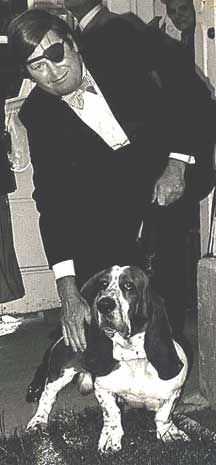
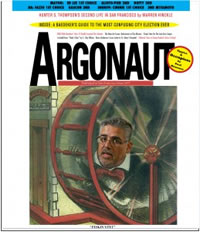





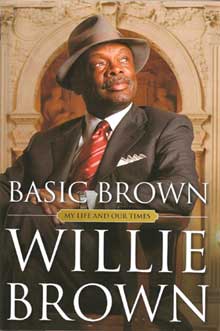
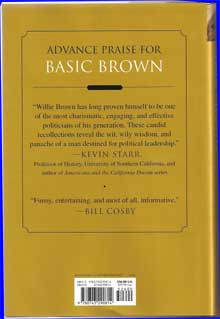
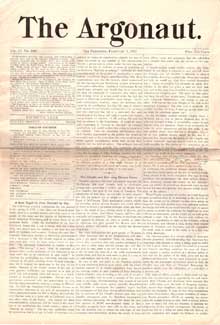
2 responses so far ↓
1 Kristine Enea // Nov 12, 2010 at 1:37 am
“In D10 the number of exhausted ballots was over 8000. In contrast, the numbers of exhausted ballots in D2 and D8 were only, 1300 and 1400, respectively. These figures show the need for much greater voter education about RCV in future elections in working class areas such as D10 and 11.”
I’m all for more education on RCV if we decide to keep using it, and I hope Elections will analyze whether it disenfranchised particular groups. But thirteen-hundred D2 voters’ choosing neither Reilly nor Farrell – that’s more shocking to me than D10 voters’ not predicting that Tran would make it to Round 19. D10 didn’t have that many exhausted ballots until Round 14, when the number of candidates remaining was six, same as the number of candidates in D2. What’s also shocking is that nearly 3500 D2 voters didn’t choose anyone at all for Supervisor. That’s a lot more undervotes than in D10, even as a percentage.
D10 had twenty-one candidates. As one of them, I explained RCV to plenty of voters. Almost no one understands how it works, including those in the so-called professional class. At least most of those who did vote in D10 recognized the importance of the Supervisor’s race, and most were smart enough to ignore the candidates who told them to ignore RCV.
I’m going to bet this is the first time in history that RCV has given the win to someone who started out in fourth (or maybe fifth) place. Any data on that?
2 Rob Anderson // Nov 19, 2010 at 1:52 pm
The big flaw in RCV voting is the assumption that for many voters there’s more than one candidate that’s acceptable.
You must log in to post a comment.